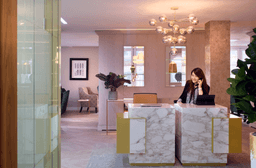Welcome to the Golden Era of Flexible Workspaces
As we sail through the 21st century, the landscape of how and where we work is undergoing a transformation that’s both revolutionary and evolutionary. Traditional office environments, with their rigid structures and nine-to-five schedules, are making way for more adaptable, dynamic setups. This shift is not just about aesthetics or office layouts; it’s a reflection of a deeper change in our understanding of productivity, creativity, and well-being in the professional sphere.
The Inspiration Behind Flexible Workspace
The concept of flexible workspaces emerged from a combination of various factors. Advances in technology, changes in societal values towards work-life balance, and a growing recognition of the diverse needs of a modern workforce have all played a part. Add to this the lessons learned from global events, such as the recent pandemic, which demonstrated the viability and benefits of remote working, and it becomes clear why flexibility has become a cornerstone of contemporary workplace design.
Decoding the Flexibility Phenomenon
At its core, a flexible workspace is designed to support a variety of working styles and needs. It encompasses everything from co-working spaces that foster collaboration and community among different companies and freelancers, to offices with hot desks, quiet zones, and breakout areas to suit individual preferences. Technology plays a pivotal role, enabling employees to work effectively from anywhere, be it a cafe, a park, or their home.
The Advantages of Adopting Flexibility
The benefits of embracing flexible workspaces are manifold. For employees, it often translates into a better work-life balance, increased job satisfaction, and higher productivity. Organisations, on the other hand, can enjoy reduced overheads, attract and retain top talent, and foster a culture of trust and autonomy. This adaptability also positions companies to be more resilient and responsive to changing market dynamics and unforeseen challenges.
Additionally, a huge benefit of flexible office space is that it provides businesses with commercial flexibility to grow, downsize or vacate as and when they want. Flexible workspace is a hassle-free concept, where everything is catered for such as IT & telecoms, furniture and breakout areas ensuring easy transition between offices and workspaces.
By not only adapting to flexible office spaces, but allowing your employees the chance to take advantage of hybrid working can lead to an increase in job satisfaction. Hybrid working, combines remote and on-site work, have become an essential aspect of today’s flexible working environment. This approach allows employees the freedom to choose where they work based on their tasks, schedules, and life commitments, further enhancing the flexibility of modern work environments.
Challenges for office spaces
All office spaces come with their own set of challenges. The universal challenge for all types of work or office space is maintaining team cohesion and managing performance remotely are valid and require thoughtful strategies and tools. Moreover, creating an inclusive culture that supports remote and in-office employees equally is crucial to avoid a two-tier workforce.
However, with the adoption of flexible workspaces your business can benefit from the increased level of scalability, allowing businesses to easily adjust their space and resources as their needs change, promoting long-term sustainability and growth.
The Future is Flexible
The huge trend in flexible workspace represents more than just a shift in physical environments or work schedules. It’s a reimagining of the workplace that prioritises flexibility, autonomy, and well-being. By embracing this change, organisations can not only enhance their operational efficiency and creativity but also build a more inclusive, resilient, and future-ready workforce. The journey may feel complex, but flexible office space can alleviate any worries, helping you focus on what matters to your business.


